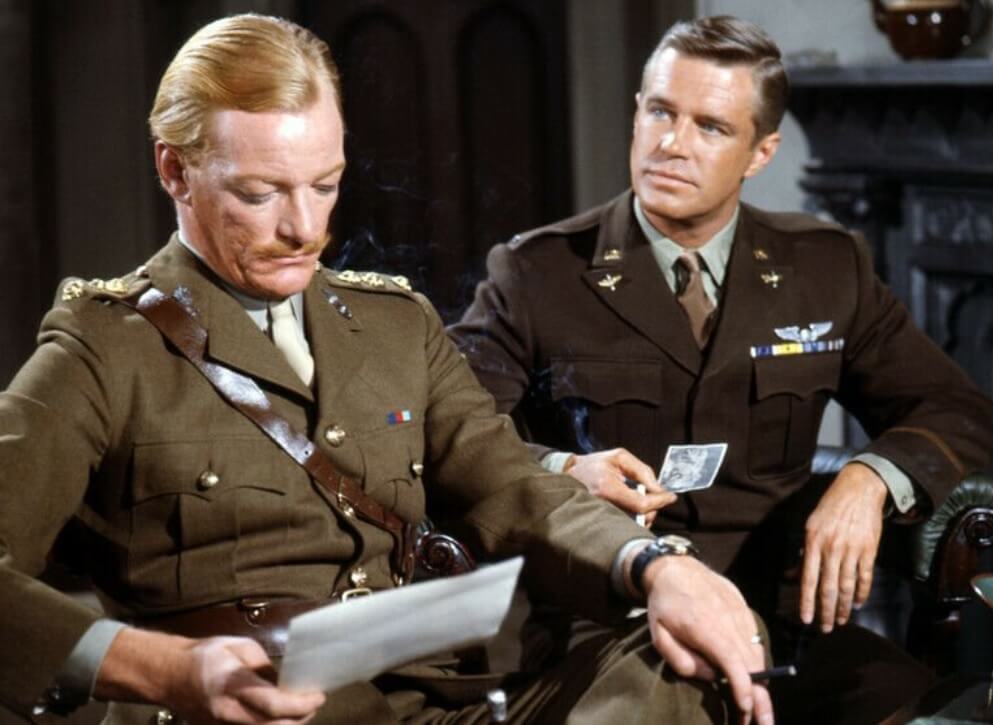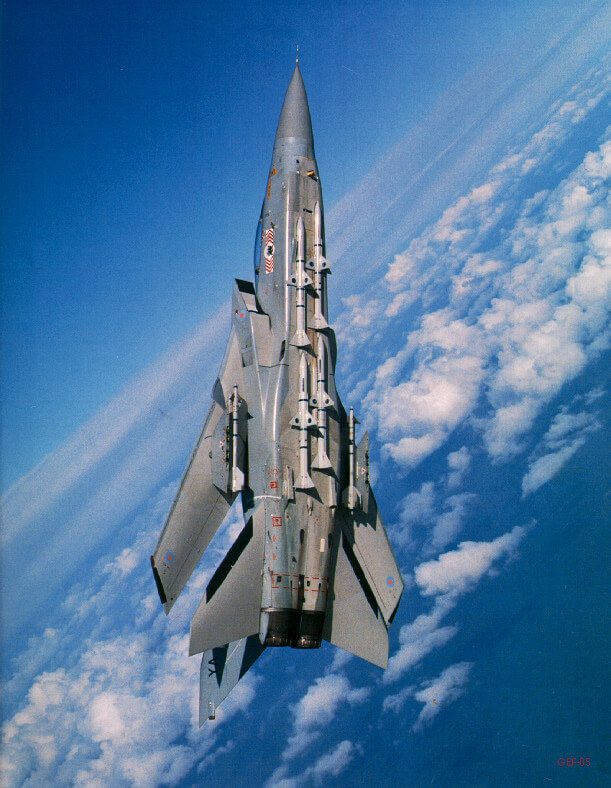We are sad to record the passing here of self taught TV botanist and naturalist David Bellamy who has died at the age of 86. Bellamy with his beard and slight speech impediment became famous on British television during the 1970s and 1980s and did much to promote the love of nature in children (the 40- and 50-something adults of today). Bellamy later somewhat blotted his environmentalist copy book by vehemently denying global warming was taking place – a factor which he claimed ended his TV career in the early 2000s. Global Warming/Climate Change is now accepted by most as being a reality (although some still argue about its causes).
We also note the death at the age of 78 of French film actress Claudine Auger who starred as the “Bond girl” Domino in the James Bond movie adventure Thunderball (1965). That film had a memorable plot involving the theft of an RAF Vulcan B1A nuclear bomber, along with its nuclear bombs, and landing it in the sea near Nassau in the Bahamas. Not surprisingly, a lot of the action was set underwater.
We also salute British character actor Tony Britton who has passed away at the age of 95. While he had played straight parts in the excellent film thrillers Operation Amsterdam (1959) and The Day of the Jackal (1973) he became more famous later in his career for his irascible English gentlemen roles in the TV sitcoms Robins Nest and Don’t Wait Up.
We finally note one passing that we missed earlier this year. The distinguished character actor Jeremy Kemp passed away in July at the age of 84. While he starred in many films and TV shows, space and film aficionados will remember him for his secret agent part in the wartime adventure Operation Crossbow (1965) in which he starred opposite George Peppard.

Jeremy Kemp and George Peppard play rocket expert characters ahead of their selection as secret agents in Operation Crossbow (1965). Courtesy: MGM
The historically correct better part of that film accurately describes Britain’s response to the planned and actual V-1 Doodlebug and V-2 (A-4) rocket attacks at the end of World War II, it climaxes with a fictional attempt to launch a “V-3” intercontinental range rocket towards New York. While such rockets were on the drawing board, none was ever built.
Kemp who specialised in playing either German officers or English gentlemen, again played opposite George Peppard in The Blue Max (1966), a very entertaining movie featuring the actress Ursula Andress, then at the apogee of her beauty, which describes the short but exciting lives of German pilots during World War I. Kemp later played a German general in the World War II set 1980s The Winds of War TV series derived from Herman Wouk’s novel (Herman Wouk also passed away earlier this year).
We give our salute to all of the above and give our condolences to their families and friends.
Post script: While the above are people, we also note the passing, at least from Royal Air Force (RAF) service, of the Panavia Tornado fighter-bomber aircraft in March 2019.
While its payload/range capabilities were inferior to its much-loved predecessor, the Buccaneer, the Tornado IDS (Interdictor/Strike), aka the Tornado GR1 and later Tornado GR4, was faster (it was supersonic) and had much better avionics systems. While arguably not as good a low-level bomber as the Buccaneer, nevertheless the swing-wing Tornado was still a very good strike jet, giving the RAF (and its German, Italian and Saudi Arabian Tornado operating counterparts) excellent service for nearly 40 years.
The Tornado was successfully used in several wars including both Gulf wars. That said, the RAF’s ill conceived tactics, partly driven by faulty risk analysis, resulted in a very high attrition rate for the Tornado early in (and before) Gulf War I. Experience soon showed that because of ground fire and terrain collisions, its low-level strike tactics (with its JP233 runway denial and conventional bombs) were much more hazardous than dropping laser-targeted bombs from medium-level.
Operations at this higher level were possible because because the Iraqi air force was soon swept from the sky, and because of presence of aircraft carried anti-radar missiles which deterred Iraqi surface-to-air missile defences from being used. And so, belatedly in Gulf War I, the Tornado GR1 bombing operations were successfully changed to the relative safety of medium level with the targeting assistance of laser designator-equipped RAF Buccaneers.
The two-seat Tornado was also developed into a very fast-in-a-straight line long-range interceptor version for the RAF and Saudi Air Force called the Air Defence Variant (ADV), aka the Tornado F2 and later F3. Even though its RAF fighter pilots not-so-secretly yearned for a more agile mount such as the US-built F-15, the Tornado F3 gave good service, replacing the RAF’s venerable F-4 Phantom fleet.
The RAF Tornado F3 never shot an aircraft down, having had little opportunity to engage an enemy. While more agile than the F-4 Phantom, during first Gulf war the Tornado F3’s relative lack of agility relative to more modern types like the Mig-29 meant that it was kept away from Iraqi airspace and employed instead on Saudi airspace guard duty. Nevertheless, after the Gulf War, it later patrolled the no-fly zone over Kosovo and came close to engaging Serbian Mig-21 aircraft there. (By the way, the Tornado family did get a “kill” in Gulf War I. An Iraqi Mig-25 was destroyed as it took off by a bomb dropped from a Tornado GR1. This made it honours even as an Iraqi Mig-29 is alleged to have shot down another Tornado GR1).
The Tornado F3’s originally low-level-optimised RB-199 engines were known to be a bit “wheezy” at high altitudes on dry power alone, often causing the jet to struggle to reach its tanker aircraft. Nevertheless, once its engine’s afterburners were fired up, the sleek-looking long-nosed Tornado F3 had very high speed and very fast acceleration at all altitudes which allowed it to make successful Mig-23-style slashing attacks against notionally more agile competitors e.g. the F-15, F-16 and F-18.
Even before Tornado F3 got the Amraam active radar guided missile, its Skyflash semi-active radar guided missiles were very effective beyond visual range (BVR), which, along with its shorter range Sidewinders and 27 mm cannon, still made the aircraft a formidable opponent. And if an air battle threatened to become a short-range subsonic dogfight, exercises showed that one way to make up for the Tornado F3’s weaknesses in this area was to have it fly with radar-less Hawk trainer jets as agile accomplices.
However, once the Tornado F3’s multi-tracking and engagement capabilities were finally perfected on the Foxhunter radar set, its new Amraam medium range missiles and helmet-cued off-boresight capable Asraam short-range missiles (which made up for the Tornado F3’s lower agility) allowed it to compete with, and beat, the best jets sent against it.
Despite these improvements, the Tornado F3 was eventually replaced by the very agile single-seat Eurofighter Typhoon once this came on stream in 2011. The Typhoon finally gave the RAF another single-seat fighter/interceptor since the English Electric/BAC Lightning was retired in 1988, even if, like the original Lightning jet, it remains very range limited.
The short-nosed Tornado IDS bomber version soldiered on for eight more years. With its retirement in March 2019, the RAF finally gave up its long-range overland strike role, ceding this to the Royal Navy and its submarine-launched cruise missiles.
While predictions of the end of manned aircraft have been around since the 1950s, and were, until now largely proven wrong, nevertheless the RAF is becoming increasingly reliant on unmanned Hellfire missile-armed MQ-9 Reaper drones for shorter range tactical strike use.
As it is, having already retired the Jaguar and Harrier jet fighter-bombers, and with the retirement of the Tornado, the RAF now only has the Typhoon and new “stealthy” vertical-landing F-35B (operated in conjunction with the Royal Navy) as its front line types, albeit with radar-less Hawk trainers acting as back ups. These types can operate both as short-range interceptor/air-superiority fighters and as strike aircraft. While RAF’s current manned multi-role jets’ range is too short for long range strike missions, they can at least have an their “reach” extended, when required by air-to-air refueling and via the use of air-launched cruise missiles such as the Storm Shadow.








